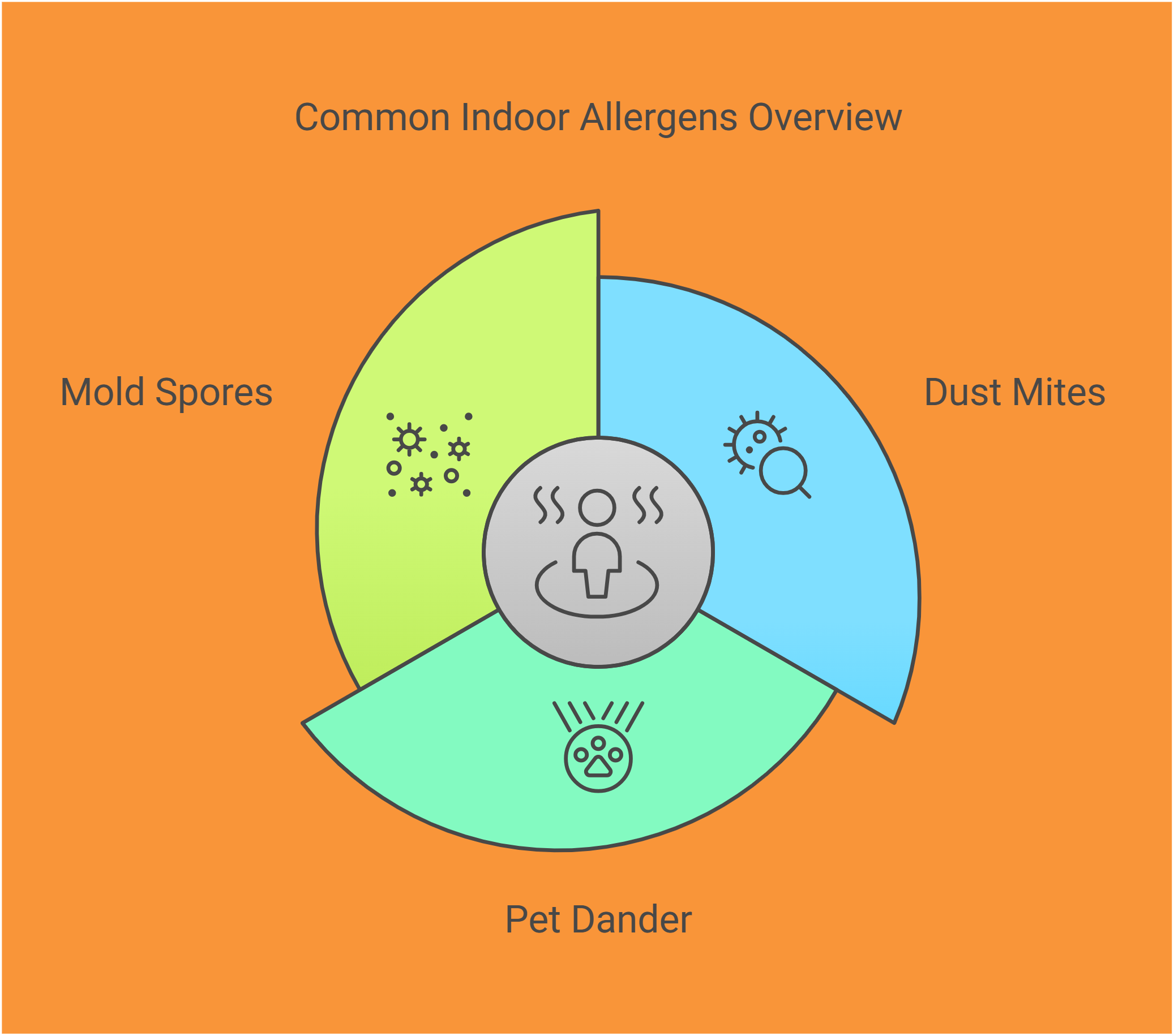
Breathe Easy: The Invisible Threats Lurking in Your Home's Air
Imagine spending hours cleaning your home, only to find yourself sneezing, itching, and feeling miserable. The culprit? Invisible allergens that have made your living space their personal playground. This guide will uncover the hidden dangers in your home's air and provide you with actionable strategies to create a healthier living environment.
What Are Indoor Allergens, and Why Should You Care?
Indoor allergens are microscopic particles that can trigger allergic reactions and respiratory issues. According to the American College of Allergy, Asthma, and Immunology, up to 50 million Americans experience various types of allergies each year, with many of these reactions directly linked to indoor air quality.
The Most Common Indoor Allergen Culprits
Dust Mites:
The Microscopic Menace These tiny creatures thrive in warm, humid environments, making your bed, carpets, and upholstered furniture their ideal habitat. Dr. James Sublett, clinical professor at the University of Louisville, warns,
"A single mattress can harbor anywhere from 100,000 to 10 million dust mites."
Pet Dander:
Fluffy's Hidden Health Risk Even if you're not immediately allergic, pet dander can accumulate and cause long-term respiratory issues. The Asthma and Allergy Foundation of America reports that - 3 in 10 people have allergic reactions to cats and dogs.
Mold Spores:
The Silent Home Invader Moisture-prone areas like bathrooms, kitchens, and basements can become breeding grounds for mold. The Centers for Disease Control and Prevention (CDC) emphasizes that - mold can cause serious health problems, especially for those with pre-existing respiratory conditions.

Detecting Allergens: Your Defensive Game Plan
Advanced Detection Techniques
Air Quality Testing Kits: Invest in professional-grade testing kits that can identify specific allergen types and concentrations.
Regular Cleaning Routine: Implement a strategic cleaning schedule targeting high-risk areas.
Humidity Control: Keep indoor humidity between 30-50% to discourage dust mite and mold growth.
Effective Allergen Removal Strategies
Cleaning Techniques That Actually Work
High-Efficiency Cleaning
Use HEPA filter vacuums
Wash bedding in hot water (130°F or higher)
Steam clean carpets and upholstery quarterly
Air Purification Methods
Install HEPA air purifiers
Use activated carbon filters
Consider UV-C light air purification technologies
Advice from Indoor Air Quality Experts
When it comes to improving indoor air quality, experts often emphasize the importance of proper ventilation. This means ensuring that your living spaces are adequately supplied with fresh air while allowing stale air to escape.
Consider using exhaust fans in kitchens and bathrooms to help remove moisture and pollutants. Additionally, opening windows whenever possible can significantly enhance airflow, especially in moderate weather. If outdoor air quality is a concern, investing in high-quality air purifiers with HEPA filters can effectively capture allergens and particulate matter.
"We spend most of our time indoors, so that air is just as important as that on the outside."
- Albert Rizzo, a pulmonologist and chief medical officer for the American Lung Association.
When to Seek Professional Help
If you're experiencing persistent allergy symptoms despite thorough cleaning, it might be time to consult:
An allergist
A professional indoor air quality inspector
A certified mold remediation specialist

Long-Term Prevention: Your Healthy Home Blueprint
Regular HVAC maintenance
Annual professional deep cleaning
Minimize fabric and carpet usage
Maintain proper ventilation
Control indoor humidity
The Bottom Line
Creating an allergen-free home isn't about perfection—it's about consistent, strategic efforts. By understanding these invisible threats and implementing targeted strategies, you can significantly improve your indoor air quality and overall health.
Quick Takeaways:
Identify common indoor allergens
Use advanced detection methods
Implement thorough cleaning techniques
Invest in air purification
Seek professional help when needed
Your home should be your sanctuary, not a breeding ground for health risks. Take control of your indoor air quality today!
 Add Row
Add Row  Add
Add 




Write A Comment